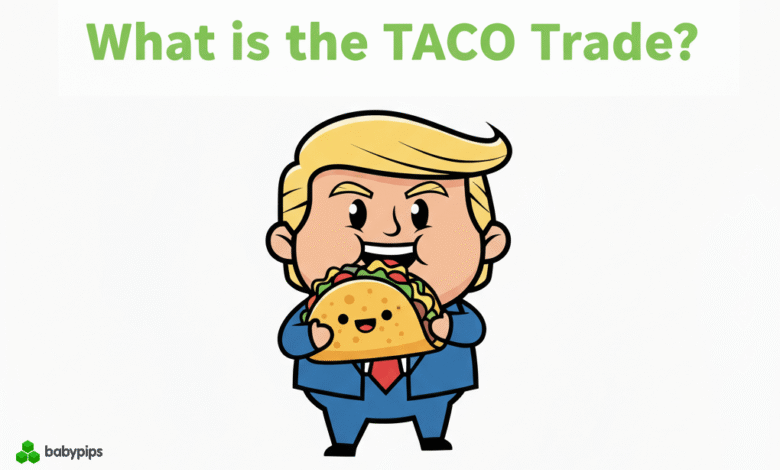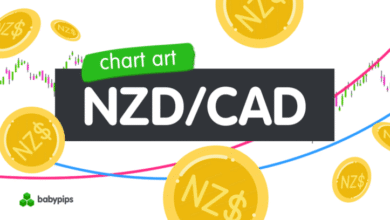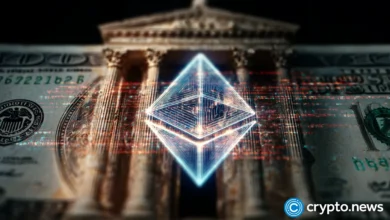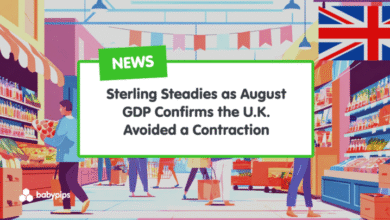
If you’ve been keeping an eye on the markets this year, you know it’s been a roller coaster, and it’s not just from central bank policy shifts or assets hitting record levels.
I’m talking about times when U.S. President Trump announces huge tariffs and markets tumble, only for him to walk it back days later and send prices soaring again.
We’ve seen this exact scenario play out several times in just the past few months.
It’s happened so often that Wall Street even turned the chaos into an acronym: TACO, which stands for “Trump Always Chickens Out.”
It’s not just a meme—it became an actual trading strategy:
Buy the dip after tariff threats, then sell when Trump inevitably backs down.
For six months, it worked like clockwork.
Until October 2025, when China proved the pattern might finally be broken.
Let’s TACO-bout it.
The Birth of TACO: Liberation Day Goes Sideways
The story starts on April 2, 2025—”Liberation Day.” Trump unveiled massive tariffs on over 180 countries. China got hit with 54% tariffs, the EU with 20%, Vietnam with 46%. The market response was savage.
The S&P 500 dropped more than 10% in three days. Safe haven gold breached $3,150 for the first time. TRILLIONS of dollars vanished. Analysts called it “worse than worst-case scenario.”
Then came the twist: One week later, Trump hit pause. He dropped most tariffs to 10% for 90 days. Markets exploded higher. By May, all the losses were erased.
This pattern is repeated throughout spring and summer. NBC News counted TEN separate times Trump threatened tariffs, then backed down. Europe, China, Colombia—same story every time. Big threats, market selloff, then retreat.
Financial Times gave it a name in May: the “TACO theory—Trump Always Chickens Out.” California Governor Gavin Newsom joked, “It’s raining tacos today” after a court struck down some tariffs.
The trading playbook was dead simple: When Trump announces tariffs and stocks tank, buy. When he backtracks and markets rally, sell.
Rinse, repeat, profit.
TACO Meets Reality: China’s Rare Earth Power Play
Fast-forward to October 9, 2025. China announced that starting December 1, companies would need special licenses to export anything with rare earth minerals in it.
This is a BFD, as China controls over 90% of the world’s processed rare earths, materials critical for everything from iPhones to fighter jets to wind turbines.
Like clockwork, Trump reacted by making a Truth Social post threatening 100% tariffs on China by November 1, on top of existing 30% tariffs. That would bring the total to 130%—essentially trying to shut down trade with America’s biggest rival.
The October 10 announcement hammered markets:

Dollar Index, Gold, S&P 500, Oil, U.S. 10-yr Yield, Bitcoin Overlay Chart by TradingView
- S&P 500 and the Nasdaq saw their worst day since April
- Bitcoin’s crash to $109,800 triggered a $19-billion wipeout in 24 hours. That’s the largest crypto liquidation event in history!
- Gold surged above $4,000/oz as investors fled to safety
- The U.S. dollar dipped while safe-haven bonds rallied
Analysts said if traders weren’t still betting on the TACO trade working again, stocks would’ve fallen way more—maybe 10% instead of 2.7%. The market was cushioned by hope that Trump would back down like always.
Since then, U.S.-China trade relations have shown little signs of easing:
- On October 12 (Sunday)
- China’s Commerce Ministry accused the U.S. of a “textbook double standard,” saying it didn’t want a trade war but isn’t afraid of one
- Trump posted, “Don’t worry about China, it will all be fine!,” and called President Xi “highly respected”
- On October 14 (Tuesday)
- China levied port/docking fees on U.S.-owned, operated, built or flagged vessels but clarified that Chinese-built ships would be exempted from the levies
- Trump called China’s not buying U.S. soybeans an “Economically Hostile Act,” and threatened to not buy China’s cooking oil
- On October 15 (Thursday)
- US Treasury Secretary Scott Bessent hinted at pausing import duties on Chinese goods for longer than three months if China halts its plan for strict new export controls on rare-earth elements
- Bessent floated the idea of a “group response” and will be speaking with “European allies, with Australia, with Canada, with India and the Asian democracies,” at the IMF and World Bank meeting this week
- Bessent still confirmed Trump “is a go” on meeting Xi later this month
Will TACO Work This Time?
Trump writing “Don’t worry about China, it will all be fine!” just two days after his threat suggests he’s looking for an exit.
But here’s the crucial difference: This time, China may be holding the cards, not Trump.
China may not be bluffing with rare earths. As everyone is highly aware of, China controls the arteries of high-tech civilization. The U.S. literally cannot build advanced technology without them, and there’s no quick replacement.
Trump may have picked a fight where he doesn’t hold the leverage.
What worked before: Trump had the power. He could threaten tariffs, watch markets panic, then reverse course when things got ugly. Traders made money by betting on his pattern of backing down.
What’s different now: China controls resources America badly needs. China targeted the one thing America can’t afford to lose access to.
What happens next: Watch the November 1 deadline. If Trump delays or reduces the tariff, TACO lives on and markets rally. If the full 100% tariffs kick in, we’re in uncharted waters.
Key Lessons for Traders
The pattern isn’t guaranteed. Just because something worked before doesn’t mean it works forever. Markets adapt, circumstances change, and patterns break.
Leverage kills. The crypto market’s $19 billion liquidation showed how borrowed money turns dips into disasters. If you’re using high leverage to bet on TACO working again, you’re playing with fire.
Context matters. Early TACO trades worked because Trump controlled the situation. Now China holds power Trump doesn’t have. Same president, different chess board.
Risk management is everything. Whether TACO works once more or breaks completely, position sizing and stop losses aren’t optional—they’re survival tools when policies change via social media posts.
The TACO trade taught Wall Street that Trump’s bark is often worse than his bite. But October taught us something else: Even reliable patterns eventually meet their match.
Smart traders are watching November 1 closely. The rest are about to learn an expensive lesson about assuming patterns last forever.
Source link








